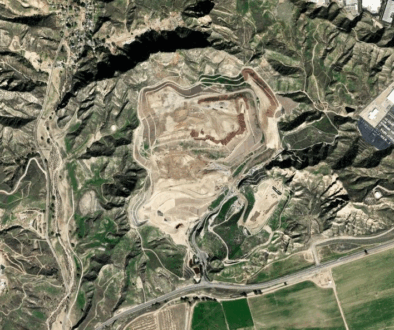Listen to the audio version of this article (generated by AI).

Even though it delivers airtight data and analysis essential for understanding and managing the risks industrial societies pose to water, land, and health, the US Geological Survey (USGS) is a federal science agency that rarely attracts public notice.
So when my colleague, Brett Walton, told me about a new USGS study that found diminishing concentrations in groundwater for all but one of a group of twenty-two old-school pesticides widely known to cause disease in humans, I got interested. Maybe something to cheer about amid all the turmoil of the era.
I took a close look. To some extent, the findings of the new study are a bit of good news. But as I considered the results presented by the report’s authors, and how they reached their findings, a much more significant measure of really bad news was revealed.
It wasn’t about pesticides. Rather it’s about the expertise, capacity, and value of an environmental monitoring agency capable of conducting such a study that the Trump administration is intent on wrecking.
A $20 billion US pesticide market

Let’s start with a brief summary. As you know, pesticides are the group of farm chemicals toxic to weeds, insects, and plant diseases. As you might not know but could probably hazard a guess, the value to manufacturers of this poisonous enterprise is roughly $20 billion a year in the US.
On one hand, the billion pounds of pesticides applied annually to crops, orchards, and animal feeding operations help American farmers produce a bounty of food. And though the manufacturers insist that their pesticides are safe, science has found that persistent exposure to even tiny amounts in water or air can be harmful or deadly to animals and people.
That’s the primary reason that, starting with DDT — which injured birds and was pulled off the market in 1972 — over two dozen pesticides have been banned or severely restricted for use in the US because of their danger to human health, including at least three chemicals in the group evaluated in the USGS report.
Programs to reduce risk
Because they are viewed as indispensable to contemporary agriculture, the nation turned to science to reduce the risks. Toxicologists established safety limits for pesticides in drinking water, known as human health benchmarks. The USGS developed instrumentation and sampling practices to measure pesticide concentrations in surface and groundwater.
The USGS water monitoring programs have no equal in the world, encompassing thousands of sites coast to coast to assess water quality. The new USGS report is a product of that capacity. The agency’s field specialists and scientists evaluated pesticide concentrations in 59 groundwater networks around the country from 1993 to 2023. The report’s authors drew three conclusions from the data presented.
First, the study found that only levels of DBCP, an insecticide used in California orchards and banned in 1977, exceeded the health benchmark. Those unsafe levels were found in just one groundwater network in the state’s Central Valley. Health benchmarks declined in every one of the other 58 groundwater networks nationwide. Very clearly it’s a trend going in the right direction.
Second, the report confirmed that pesticides are extremely persistent in the environment. Groundwater networks across the country are still contaminated by trace levels of pesticides and have been since at least 1993, according to the report.
Third, the highest concentrations are in groundwater in America’s farming regions, particularly the Midwest. That’s a trend that needs to be continuously monitored, especially for the newer, popular pesticides like glyphosate and dicamba that were not measured in this assessment. The USGS, founded in 1879, developed the skills and tools to do just that — closely evaluate environmental conditions over decades and conduct such studies.

Water monitoring seen as “woke”
That draws us to the most important point about the report. The Trump administration doesn’t want Americans to know about farm chemicals in water. Continuing his treacherous trashing of progress, the president and his aides apparently consider environmental monitoring a “woke” activity and are desperately trying to throw the agency’s program into its overflowing scrap heap. The Office of Management and Budget proposed slashing the USGS budget from $1.45 billion this year to $892 million in 2026, a 38% cut. Congress appears ready to accept the proposal once it returns from its extended paid vacation and gets back in session.
A cut of that dimension would essentially end, or at the least impose, a dangerous and potentially irrecoverable pause in all of the environmental monitoring work on water that’s being conducted by the USGS. The instruments USGS developed to conduct such studies would be abandoned. The scientists conducting the work would be drummed out of their jobs.
The Office of Management and Budget proposed slashing the USGS budget from $1.45 billion this year to $892 million in 2026, a 38% cut.
What’s happening in Washington is outrageous. It is a blatant and reckless attempt to reverse decades of slow and steady progress the USGS, US Environmental Protection Agency (EPA), states, and science have made to identify particularly toxic chemicals, restrict their use or remove them from the market. Hear me out:
Whatever howls of resistance are being heard in the countryside are drowned out by the cheers of Big Ag and farm chemical manufacturers. It’s not just the dismantling of regulations long sought by farmers. It’s this: By curtailing water sampling and analysis, the pesticide industry avoids having to confront the scientific evidence of exposure to their products that lies at the foundation of injury lawsuits and governmental restrictions. Ending USGS water monitoring keeps the 13 million Americans who rely on wells in the dark about the contaminants in their drinking water.
No administration and no political party, in fact, has expressed more allegiance to pesticide manufacturers than the Trump administration and its Republican allies in Congress. For example, Bayer, the giant German chemical manufacturer of glyphosate, the biggest selling herbicide — commonly called Roundup — has recruited strong support from the EPA. The agency is considering a petition from Republican attorneys general in 11 states to block any state from banning its use.
The Department of Health and Human Services found in a May 2025 report that pesticides are a human health risk. But in a separate study issued in September, that same department stripped out the language of the first study and instead promised that the EPA will accelerate pesticide approvals and “partner” with manufacturers to “educate” the public about EPA’s “robust review” of pesticides.
Bayer also is lobbying Congress to pass legislation that would shield the company from future lawsuits that claim Roundup causes cancer. North Dakota and Georgia have already approved similar new statutes to protect Bayer from lawsuits, which have cost the company over $14 billion in judgments to 115,000 Americans who asserted they weren’t warned about the chemical’s hazards.
Lastly, Kyle Kunkler, a top chemical industry lobbyist who’s spent years devoted to keeping dicamba — another dangerous pesticide — on the market, was chosen by the administration to be the EPA’s top pesticide regulator.
Pesticides aren’t going away. They are a perfect example of how our industrial economy weighs the health and ecological risks of potentially hazardous farm production practices against the benefits of cost-saving efficiency. Using them safely requires close oversight by a responsible government. Imagine that. Eliminating the USGS water monitoring program further tilts the risk/benefit balance in favor of pesticide manufacturers and increases our vulnerability to their proven dangers.
Opinion columns published in The New Lede represent the views of the individual(s) authoring the columns and not necessarily the perspectives of TNL editors.)
Featured image: Nebraska fields. (Credit: © J. Carl Ganter/Circle of Blue
This article first appeared on Circle of Blue and is republished here under a Creative Commons Attribution-NonCommercial-NoDerivatives 4.0 International License.




